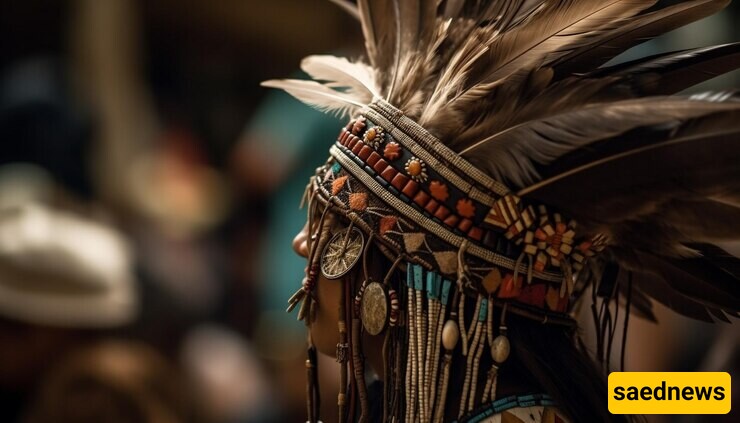SAEDNEWS: Traditional headdresses hold profound cultural, religious, and social significance across the globe. These iconic adornments tell stories of heritage, rank, and personal identity, transcending their aesthetic appeal.

Traditional headdresses are more than decorative accessories—they serve as symbols of identity, heritage, and status. From intricate tribal crowns to elaborate royal headpieces, these cultural artifacts reveal a deep connection between communities and their history. Each headdress reflects unique traditions, values, and stories.
Africa

In many African cultures, headdresses signify power, spirituality, and celebration. For example, the Yoruba people of Nigeria use gele (headwraps) during significant events, representing elegance and respect. Maasai warriors wear elaborate beadwork headdresses to display bravery and social standing.
Asia

Asian headdresses often intertwine religion and societal hierarchy. In India, the turban signifies honor and community identity, while in Japan, the kanzashi hair ornaments in traditional geisha attire symbolize femininity and social roles. In Southeast Asia, golden crowns like the Thai chada highlight royal and religious ceremonies.
Native American Tribes

Headdresses in Native American cultures, such as war bonnets, are reserved for leaders or warriors and are earned through acts of bravery and wisdom. Each feather in a war bonnet carries a unique story, making these headdresses deeply personal and revered.
Headdresses often serve as expressions of faith. In Sikhism, the turban is both a spiritual and practical garment, representing equality and dedication to God. Catholic cardinals and bishops wear miters as part of their religious office, symbolizing authority and divine service. In shamanic traditions worldwide, headdresses adorned with animal parts or sacred symbols are believed to channel spiritual energy or offer protection. For instance, the feathered crowns of Andean shamans reflect their connection to nature and spiritual realms.
Throughout history, royal headpieces have conveyed political power and divine legitimacy. The British crown jewels, for example, symbolize centuries of monarchy and tradition. Similarly, ancient Egyptian pharaohs wore the nemes headdress to signify their divine rule. In many cultures, headdresses help distinguish marital status, tribal affiliation, or age group. For example, Zulu brides in South Africa wear elaborate beaded headdresses, while certain Mongolian hats indicate a wearer’s age or clan.
Headdresses are often handcrafted with meticulous detail, using locally sourced materials like feathers, beads, fabric, or metal. Each element carries symbolic meaning. For instance, the vibrant colors of Andean headdresses represent the natural world, while gold and jewels in royal crowns reflect wealth and divine favor.
Modern artisans balance tradition with sustainability, creating headdresses that honor heritage while adapting to contemporary ethical standards. This shift ensures these symbols remain relevant for future generations.
Globalization and modernization pose challenges to preserving traditional headdress-making practices. Younger generations may lack interest or access to the skills needed for crafting these intricate pieces.
Cultural organizations and governments are working to document and protect these traditions. Events like fashion shows, cultural festivals, and educational initiatives help showcase the importance of traditional headdresses, ensuring their stories endure.
Traditional headdresses are far more than decorative ornaments—they are living testaments to cultural heritage, identity, and values. As symbols of history and community, they remind us of humanity’s rich diversity and the timeless stories woven into every thread, feather, and bead.

